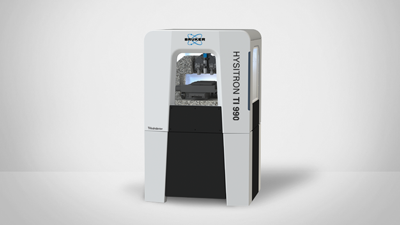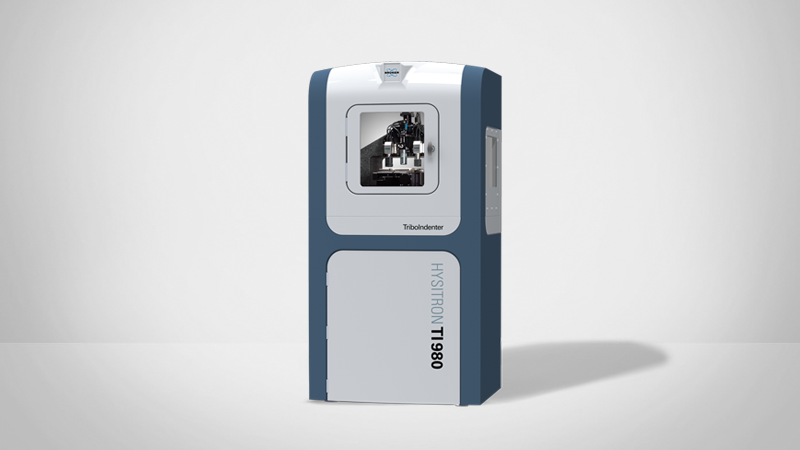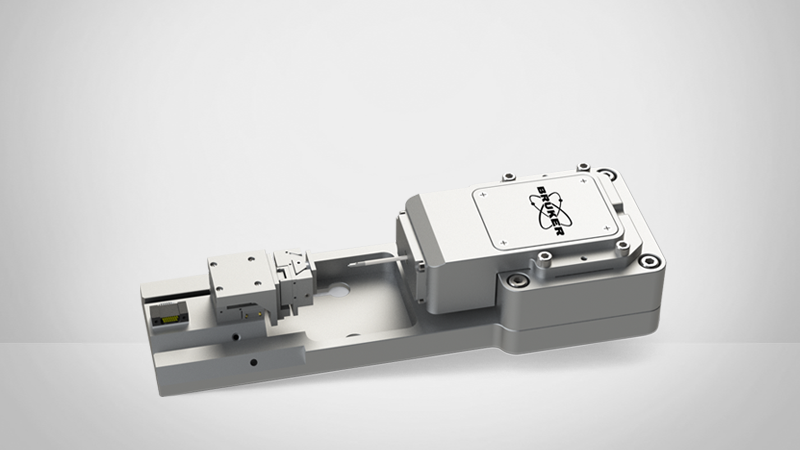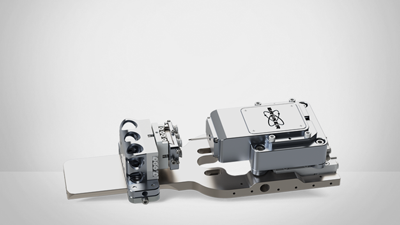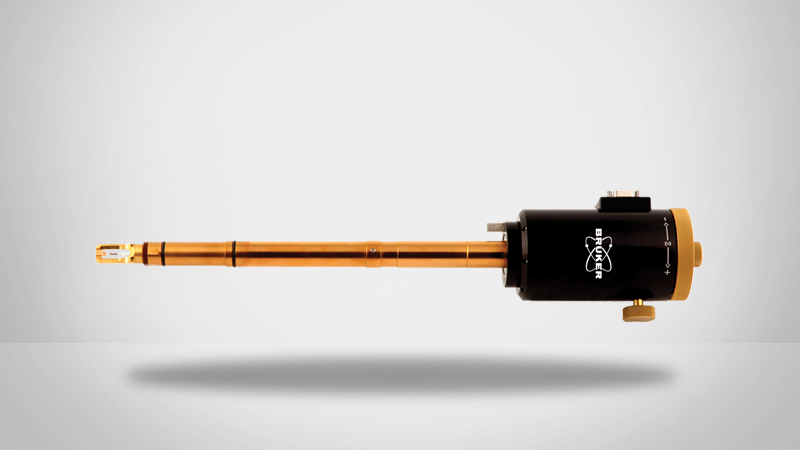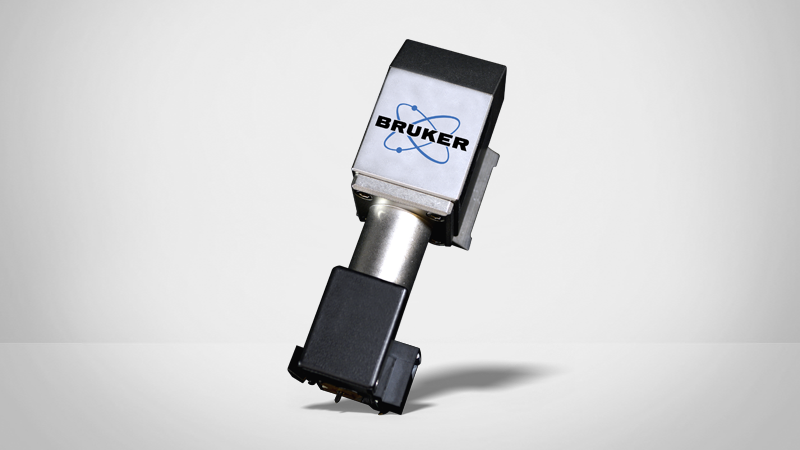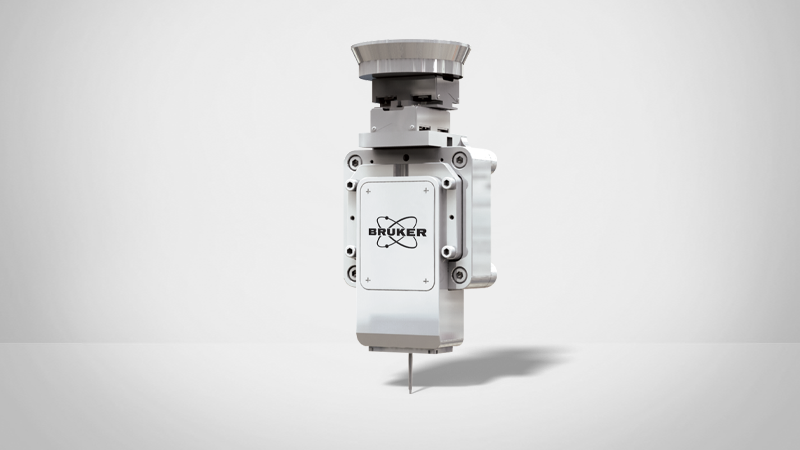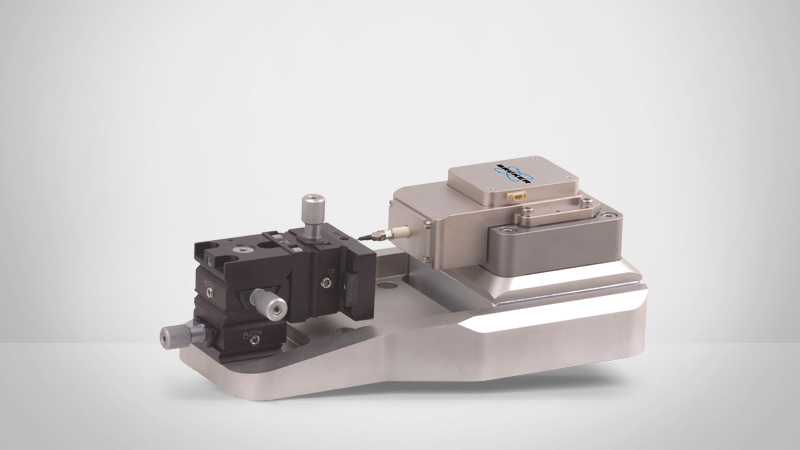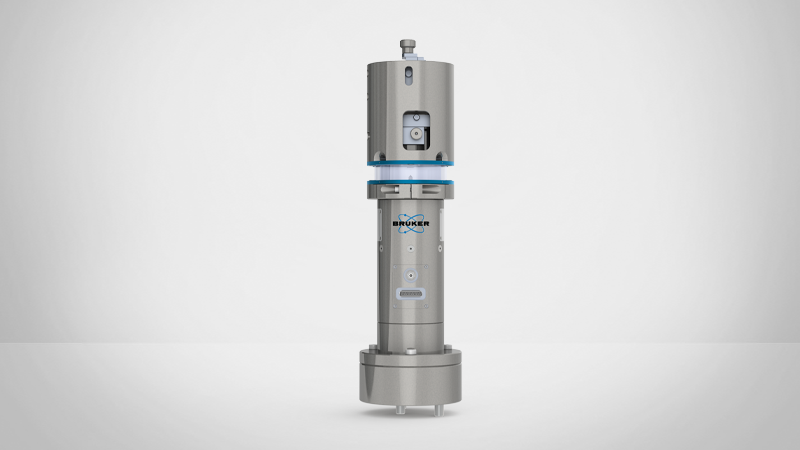Hysitron Nanoindenters
Nanoindenter Overview
Nanoindenters, also known as depth-sensing indenters or instrumented indenters, are instruments designed to quantitatively measure the mechanical properties of small volumes of material. Nanoindenters operate by pressing a nanoindentation probe into the surface of a material and measuring the relationship between applied probe force and the resulting probe displacement. The force vs. displacement curve is the mechanical fingerprint of the material from which quantitative mechanical properties can be calculated at the nanoscale.
Indentation testing has been utilized for over a century to measure the hardness of materials. In a traditional hardness test the size of the residual indent impression needs to be physically measured to obtain a hardness value (function of applied force divided by the size of the indent impression). The requirement to measure the residual indent dimensions places a lower limit on the scale of testing that can be efficiently and reliably performed. The depth-sensing capabilities of nanoindenter systems eliminate the need for measuring the size of the indent impression, increasing the accuracy, precision, and throughput of small volume mechanical property characterization.
Nanoindenter systems are not only utilized for the characterization of thin films and low dimensional materials, but are also routinely utilized to accelerate the development of bulk engineered materials. The ability to characterize individual grains/phases/interfaces within a bulk material provides a greater understanding of structure-property-processing-performance relationships. Quantitative mechanical characterization at the nanoscale combined with structure-property optimization is one of the foundations of today’s material development initiatives.
Nanoindenter systems are used to quantitatively measure a variety of nanoscale mechanical properties. In addition to hardness measurements, nanoindenter-based techniques enable elastic modulus, creep, stress relaxation, viscoelastic properties, interfacial adhesion, and fracture toughness characterization at sub-micrometer length scales.
Primary Nanoindenter Components
- Transducer: One of the most important elements of any nanoindenter system is the transducer. The transducer is a high-precision actuator that continuously measures the applied probe force and probe displacement during a nanoindentation measurement. The noise floor of the transducer and supporting control electronics defines the lower limit of testing that can be achieved by the nanoindenter. Transducer sensitivity and stability directly impacts the accuracy and reliability of mechanical characterization at the nanoscale. Bruker's Hysitron nanoindenters utilize capacitive transducer technology that deliver nN force and sub-angstrom displacement measurement capabilities for unbeaten nanoscale mechanical characterization.
- Controller: Operation of the transducer and data acquisition is achieved through a sophisticated control system. Nanoindenter systems primarily operate under closed-loop load control or displacement control modes. The speed of the feedback control loop dictates how the system responds to changing contact conditions during the nanoindentation process and how accurately the system performs the defined test function. A fast feedback control loop, low signal noise, and a high bandwidth transducer are required for maximum accuracy during nanomechanical testing. Additionally, the fact data acquisition rates are necessary to identify sudden transient events (e.g. fracture, delamination, dislocation nucleation, phase changes, etc.) that may occur during the nanoindentation process. The Hysitron Performech Advanced Control Module sets the standard in nanoindentation control technologies and delivers industry-leading noise floors (down to 0.02 nm displacement noise, 2 nN force noise), an ultra-fast feedback control loop (78 kHz), and data acquisition speeds up to 38 kHz.
- Sample Imaging: The smallest material feature/grain/phase that you can reliably test with a nanoindenter is the smallest feature that you can identify. Sample imaging is not required when testing bulk homogeneous materials, but is of critical importance when testing inhomogeneous materials or small structures. Without the means of identifying the region of interest and the ability to reliably position the nanoindenter probe within that region, meaningful characterization is impossible. Bruker has the broadest range of hybrid imaging techniques (e.g. optical, fluorescence, scanning probe microscopy, scanning electron microscopy, transmission electron microscopy, Raman Spectroscopy, etc.) for precise test placement and reliable nanoscale mechanical characterization.
- Motorized Staging: High-precision motorized staging automates the testing process and provides correlation between data taken with the nanoindenter's transducer and integrated auxiliary techniques (e.g. optical imaging, fluorescence microscopy, Raman Spectroscopy). Integrated motorized staging enables large-area mechanical property mapping, inter-sample movement, and automated multi-sample testing. Typically, high-resolution encoded stages are utilized for reliable test positioning on the region of interest.
- Anti-vibration System: Effective isolation of the nanoindenter from the environment in which it operates is critical for nanoscale mechanical characterization. Passive and active vibration isolation systems minimize the effect of building vibrations on the measured results. Anti-vibration systems allow quantitative nanoscale characterization to be performed in buildings no specifically optimized for sensitive surface characterization instruments.
- Enclosure: Nanoindenter systems are housed within an environmental enclosure to protect the system from acoustic disturbances, airflow, and temperature variability. All Hysitron standalone nanoindenter systems incorporate a custom engineered, multi-layer enclosure to assure repeatable and reliable nanoscale mechanical characterization in non-ideal environments. Additionally, the granite framing of the nanoindenter systems serve as a thermal buffer to minimize temperature fluctuations within the environmental enclosure and greatly reduce thermal drift during a measurement.
Nanoindenter Techniques
Over the past two decades, nanoindenter systems have been enhanced to perform tests far beyond quasi-static nanoindentation at room temperature. Techniques and technologies exist to quantitatively measure the nanoscale mechanical and tribological properties of most classes of material, from ultra-thin hard films to soft hydrogels. Additionally, environment-specific properties can be measured utilizing specialized environmental control stages.
Hysitron Nanoindenter Instruments
Bruker has developed and commercialized the widest range of nanoindenters and is the world leader in nanomechanical testing technologies. Our Hysitron nanoindenter instruments range from industry-leading standalone systems, to nanoindenters that interface with various microscopy techniques, to high-throughput process metrology systems. Additional details about Hysitron nanoindenter products can be found below.
How Can We Help?
Bruker partners with our customers to solve real-world application issues. We develop next-generation technologies and help customers select the right system and accessories. This partnership continues through training and extended service, long after the tools are sold.
Our highly trained team of support engineers, application scientists and subject-matter experts are wholly dedicated to maximizing your productivity with system service and upgrades, as well as application support and training.
